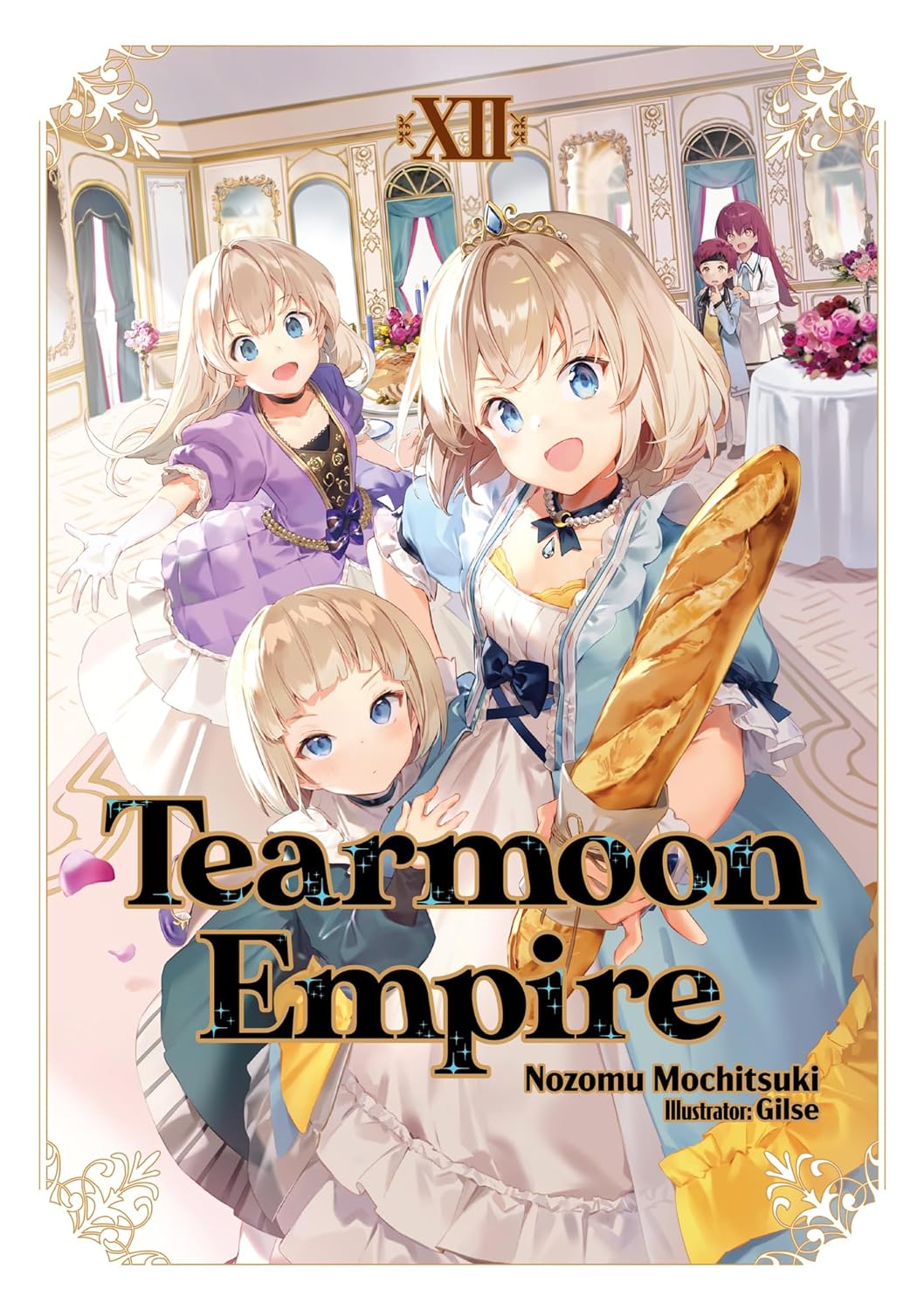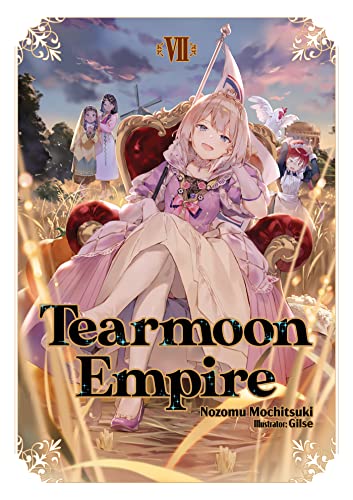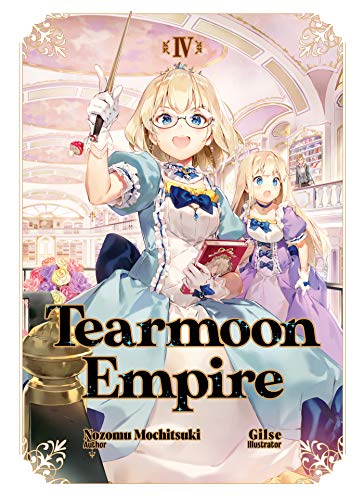By Nozomu Mochitsuki and Gilse. Released in Japan as “Tearmoon Teikoku Monogatari” by TO Books. Released in North America by J-Novel Club. Translated by Madeleine Willette.
The cliffhanger ending to the last volume already told us that Bel had returned “from the dead”, so it’s not a surprise to see her on the cover, though it is a bit of a surprise to see her looking older. Mia is also stated to have grown, and for once the narrator, usually snarky, has to assure us that it’s height this time rather than the usual fat jokes. We are told that Mia is now sixteen, which is nice to hear, but also ominous, as it was when Mia turned eighteen that she was captured by the revolution in her first timeline. And it’s probably because we’ve come so far, and are theoretically closer to the end of this series, that Mia is allowing one big secret to come out. Not her own, of course – heaven forbid – although we see some signs in the future that Ludwig may figure it out. But with so many people having seen Bel shot in the neck with an arrow and killed, there’s no other way to explain her return than time travel.
Of course, Mia has bigger problems than just Bel’s resurrection and presence back in the past. Another young girl showed up behind Bel… and Bel has no idea who she is. So presumably not from the “good future”. What’s more, the girl’s name is Patricia… the same as Mia’s grandmother… and she claims to be from a family that Mia can’t quite remember but isn’t around anymore. (It’s hinted she’s suppressing the memory as what happened to the family terrified her.) Mia, who is more on the ball in this book than any other book, is 90% sure that this is her grandmother, somehow sent into the future, the opposite of Bel, but that’s even more terrifying, as it becomes clear that Patricia has been indoctrinated by the Chaos Serpents!
I think the most interesting part of this book is that we see Mia eating a giant pile of sweets throughout, but the narrator rarely chimes in to mention her weight. This is because the sweets help Mia to think and not get distracted, and Mia needs to do a giant pile of thinking in this book. Mia is sixteen, as mentioned earlier, and while still tending towards doing the right thing for the wrong reason, she has learned to not only trust her instincts but anticipate them. She knows she cannot just ignore the Patricia problem and hope it will go away, as (let’s be honest) she did with Bel. And there’s plenty of what we read Tearmoon for, as Mia accidentally comes up with kingdom-altering ideas that will reverberate for decades to come… only it’s getting less accidental. Mia still frames it as being selfish, but she’s not only getting the best results here, she’s getting it because of her words and actions. Her final speech is a fantastic example. It was a terrific lesson. I really love her.
That said, whoops, another nasty cliffhanger. Luckily, Book 13 should be out in late August. Can Mia rescue her own past as well as her own future? And can we still quietly ignore some of the May-December romances in this series? (Looking at you, Citrina.)











